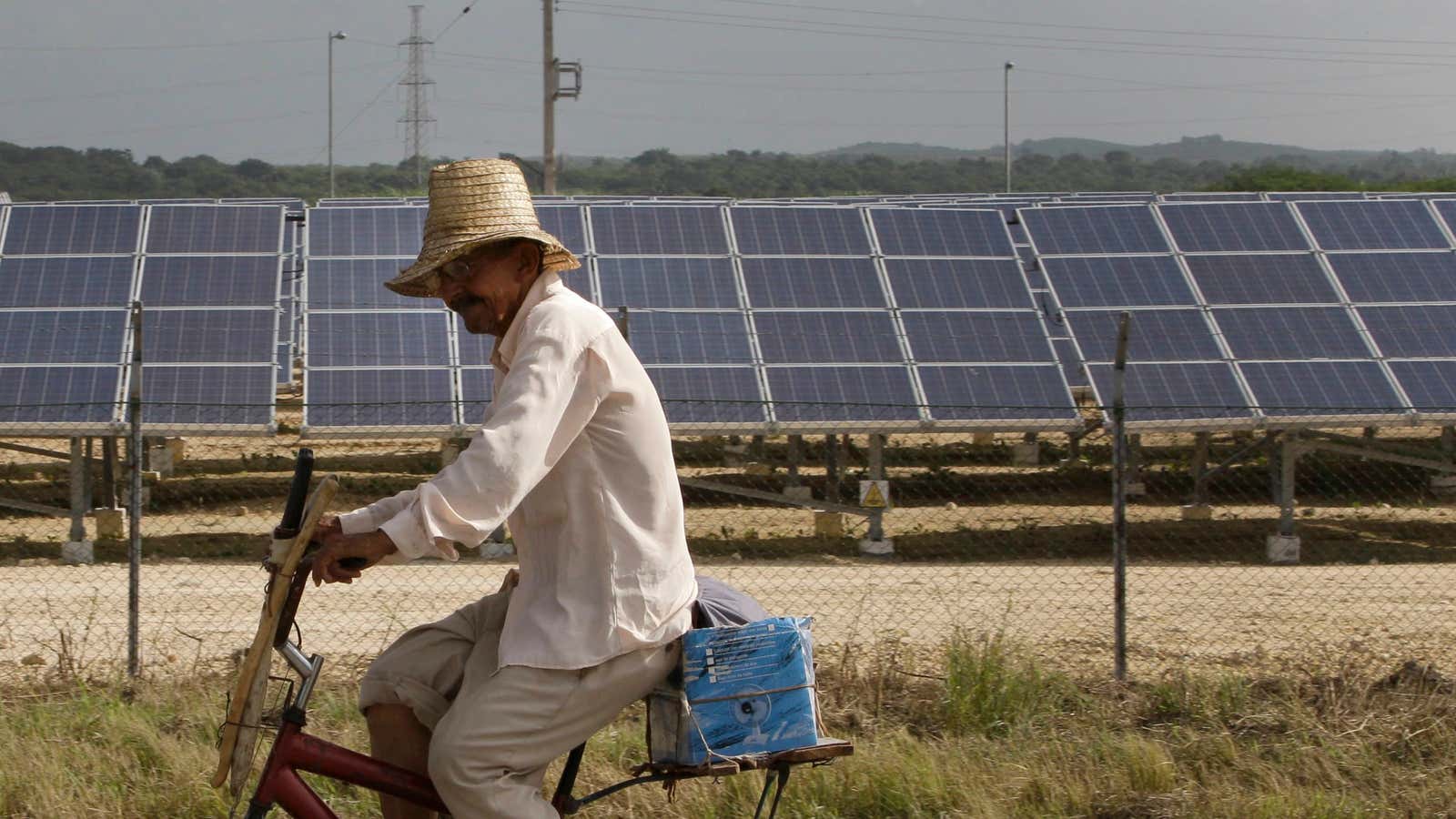You’d think it would be easy: the sun is “up,” and, like leaves and basking reptiles, solar panels should face in that general direction. But most installers of solar panels, especially the ones for homes, follow conventional wisdom handed down from architects, which holds that in the northern hemisphere, windows and solar panels should face south.
This makes intuitive sense since it would seem to maximize the amount of sunlight a panel will get as the sun tracks from one horizon to the other. But it isn’t true, at least according to a single study of homes in Austin, Texas. The Pecan Street Research Institute found that homeowners who aimed their panels toward the west, instead of the south, generated 2% more electricity over the course of a day.
More importantly, those west-facing panels reduced household electricity usage during the times when electricity is most expensive—and power grids are most likely to become overloaded—by 65%, while south-facing panels only reduced usage during those times by 54%. In Texas, as in most places, those “peak times” are from 3pm to 7pm, and correspond with the heat of the day.
It’s obvious that west-facing solar panels produce more electricity later in the day, when the sun is setting in the west, but quantifying the way that favoring late-day sunlight helps homeowners save money and utilities flatten out demand could lead to a simple but effective hack for the world’s solar installers: Simply re-orienting solar panels could shorten the amount of time it takes for them to pay for themselves.
